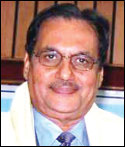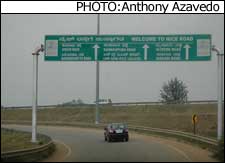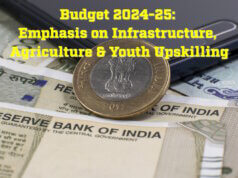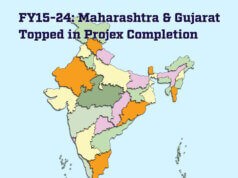 Vijay K. Saluja, Senior Fellow, Institute of Social Sciences, New Delhi, and Director, Giraffe Heroes India Programme, analyses the state of infrastructure and suggests measures on how to get it out of the quagmire.
Vijay K. Saluja, Senior Fellow, Institute of Social Sciences, New Delhi, and Director, Giraffe Heroes India Programme, analyses the state of infrastructure and suggests measures on how to get it out of the quagmire.
Roads, flyovers, underpasses and their attendant infrastructure like pedestrian over-bridges, subways, cycle-tracks, footpaths, bus queue shelters, railways, metro and monorail, water supply, sewage treatment plants, drainage systems, garbage management systems, traffic signals, signages and markings, electricity, gas, telecom, ports, airports, industrial corridors, various other utility buildings like hospitals, schools, power stations, community centres, sports centres, parking lots etc., which form the physical systems of a nation are termed as infrastructure.
All these systems are essential prerequisites for proper human existence and for the quality of life of the citizens. These need high cost investment in a properly thought-out and planned manner. These are also vital to the country’s economic development and prosperity. As huge funds are needed for infrastructure projects, both major and minor, these projects are funded and executed through public funds, privately, and through public-private partnership.
In this article, I will restrict my analysis, comments and solutions to some of the areas like roads and their attendant infrastructure, including other urban infrastructure, water supply, sewage and drainage in particular and power and transport sector in general. It does not need much effort to observe that the areas of infrastructure mentioned earlier are not in good shape, in all our metros and cities, whatever anyone may say about it.
The state of mess starts right from conception, planning, allocation of funds, design and choice of executing agencies to their actual execution and maintenance thereafter. Lack of holistic approach, carrying out works in a piecemeal manner coupled with red tape, various roadblocks viz. while acquiring land coupled with slow judicial delivery, getting various clearances, especially environmental, from various authorities, and incoherent and at times lack of policies and unethical practices including corruption at almost all levels are some of the reasons for the ailing infrastructure and its development in a disjointed and haphazard manner.
To my mind, absence of a committed, dedicated, properly-trained and visionary action-oriented leadership on one hand and officials and executing agencies of integrity on the other is one of the prime reasons for the mess in which infrastructure of India is stuck in. As a result, there is no sector where policies are consistent, long-term and really thought-out. It happens only in a ‘push comes to shove’ situation.
To buttress my point, I will take the example of Delhi, where I have been living since the 1960s and have worked for about 35 years in one of its premier local bodies. The problems and the possible solutions of its civic issues and development of infrastructure are more or less akin or applicable to the state of other metros and cities.
Delhi did not figure in the top 30 cities of the world in 1950. But, now, it is the world’s second largest. In its area of 1,483 sq. km, more than 200 lakh people were living by 2011, as per statistics. While, in 1911, its population was just Rs. 2.5 lakh and in 1958, its population was about Rs. 20 lakh. Thus, there is no control of population which a city can optimally contain.
 Despite two well crafted and deliberated Master Plans (1961-1981 & 1981-2001), there has been huge implementation deficit, with the result that there is no inclusive development and growth. Majority of its population live in unauthorised colonies, slums, squatter-settlements and hugely congested areas like urban extensions and villages. Even basic infrastructure like water supply, drainage, sewage facilities, power, garbage management and transport system is woefully lacking and inadequate. What to talk of other essential social infrastructure. Growing population is putting more pressure on the existing networks. There is no extra effort or adequate resources to augment the existing systems and providing new ones.
Despite two well crafted and deliberated Master Plans (1961-1981 & 1981-2001), there has been huge implementation deficit, with the result that there is no inclusive development and growth. Majority of its population live in unauthorised colonies, slums, squatter-settlements and hugely congested areas like urban extensions and villages. Even basic infrastructure like water supply, drainage, sewage facilities, power, garbage management and transport system is woefully lacking and inadequate. What to talk of other essential social infrastructure. Growing population is putting more pressure on the existing networks. There is no extra effort or adequate resources to augment the existing systems and providing new ones.
Increase of FAR (floor area ratio) in the existing authorised colonies has worsened the situation and environment of these colonies, as some demolition of existing houses and construction of new ones with more floors is always on, causing not only distresses of all kinds to the neighbours, but also putting more pressure on the existing infrastructure.
MP and MLA funds are mostly not being spent with proper planning, thought and keeping long-term demands of the city in view. Piecemeal efforts are only visible. Planning, design and execution of infrastructure works carried out under these heads leaves much to be desired.
Besides, quality and speed of construction is the BIG causality. There is little use of new technology and equipment in construction and maintenance. There has been vehicle explosion in the city with the result traffic arteries are choked, at most hours. Parking lots at all places including all colonies are full, as these are mostly on surface. One wonders why there has been no plan to provide underground or multi-storeyed parking lots commensurate with the requirements.
There are perennial power and water shortages, putting the majority of city residents to problems of all kinds. Flooding is also very common with the onset of rains. Heritage conservation is also poor. The result is extremely poor quality of life for most of the residents.
As mentioned earlier, for effective, efficient and economic management of our infrastructure, visionary, educated, skilled, committed, passionate and self-effacing leadership—in political, bureaucratic, judicial and technical areas including engineering colleges—is the prime requirement to render proper cure to our ailing infrastructure system as well as to cover the implementation deficit.
How this can be done is a matter of detailed deliberation and an action plan. As the problems are so intractable now, massive skill building and upgradation is required for all the stakeholders, who then have to work with integrity, passion, transparency and accountability.
Community and vigilant media with ethics will have to play a big meaningful and purposeful role and focus on stories about development and development heroes. The stakeholders—elected representatives, officials, engineers etc. including executing agencies—who do good jobs (development heroes) need to be identified, commended and rewarded on sustainable basis and vice versa. There are many other remedies to cure terminal cases, too, but I will stop here.
The need is to first start the treatment and then watch and take corrective steps, instead of simply pontificating. Intentions are imperative. If there is less talk and more positive action, cure will automatically start flowing.











